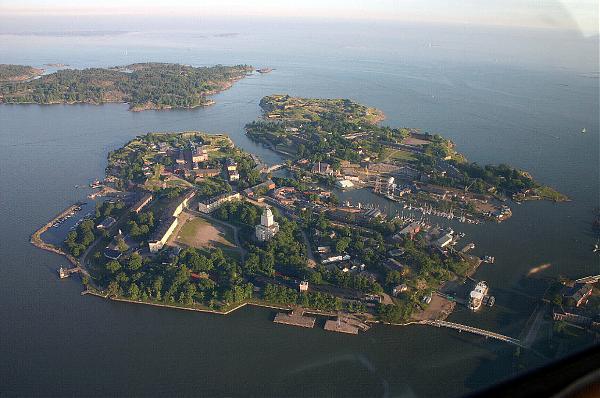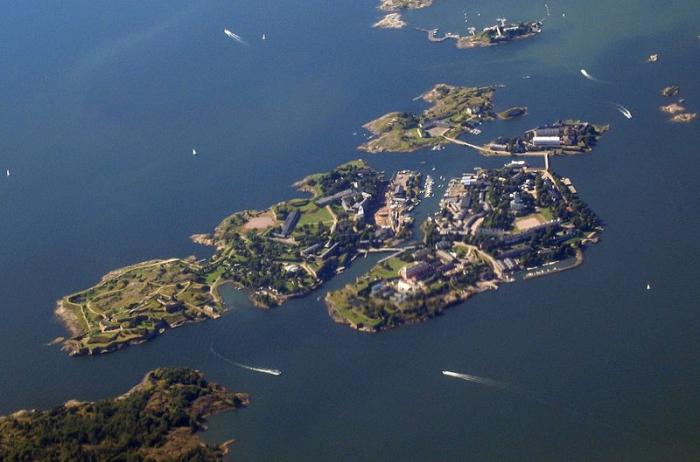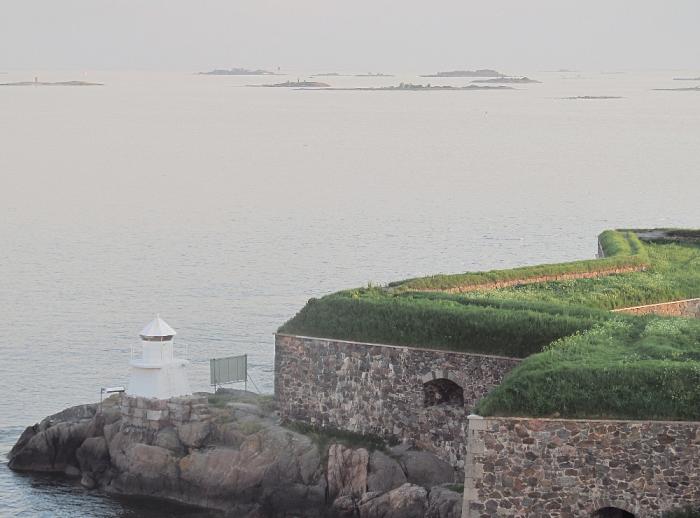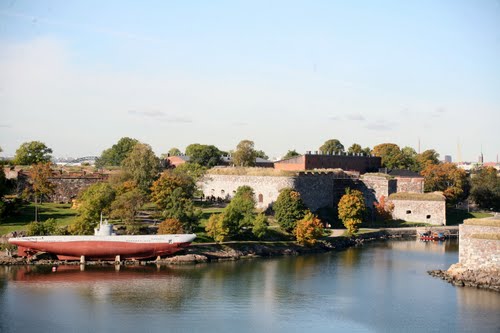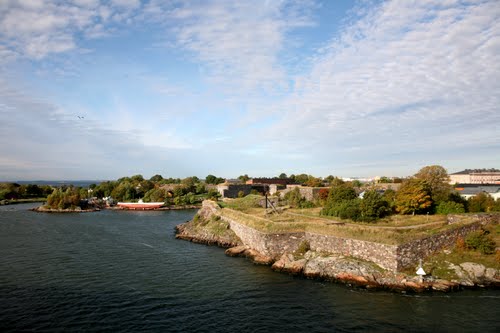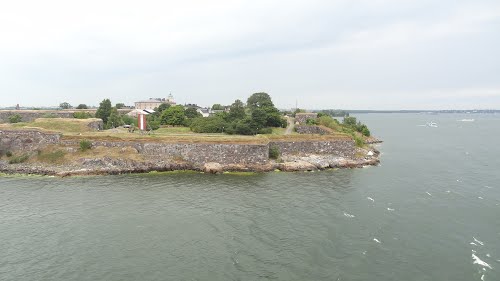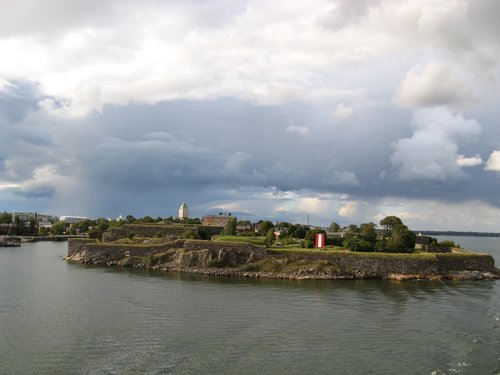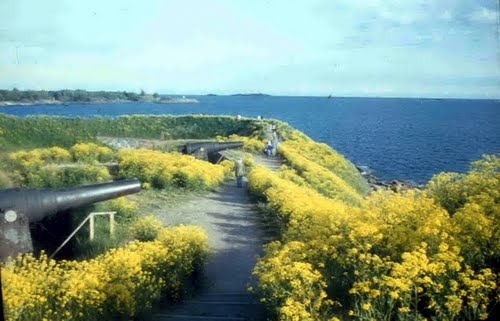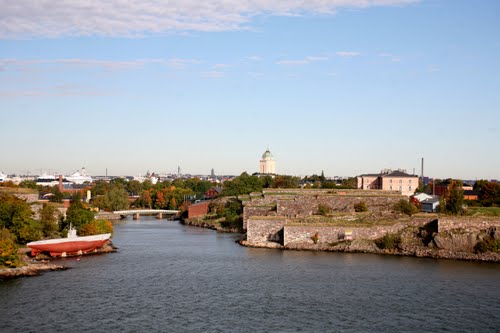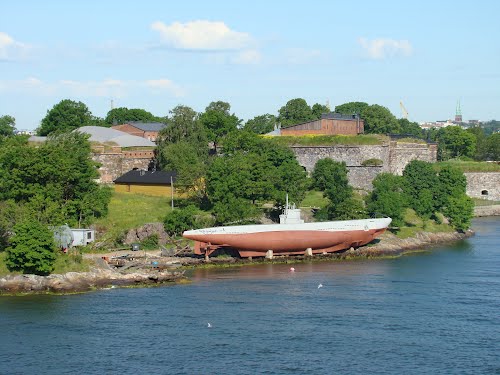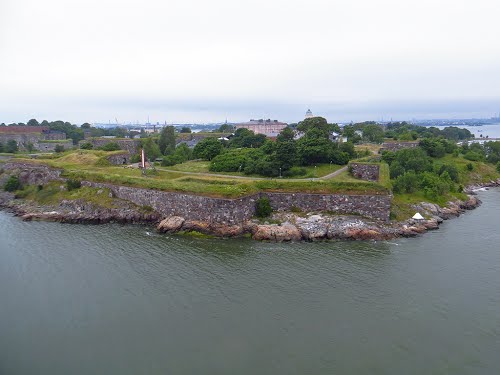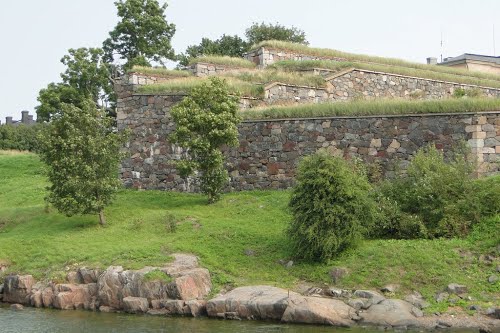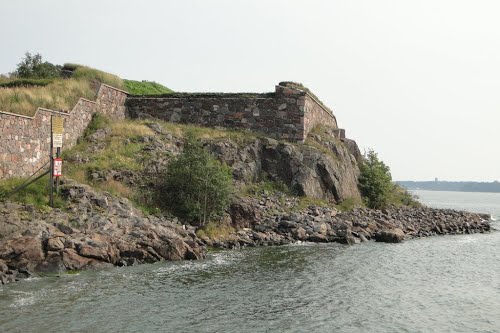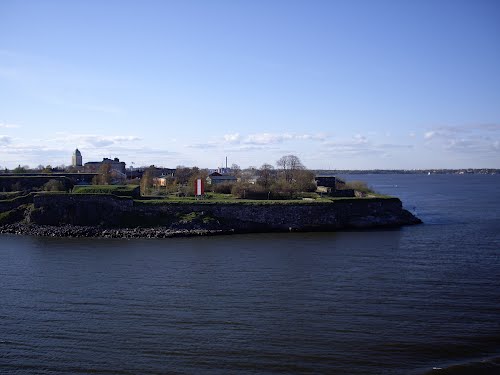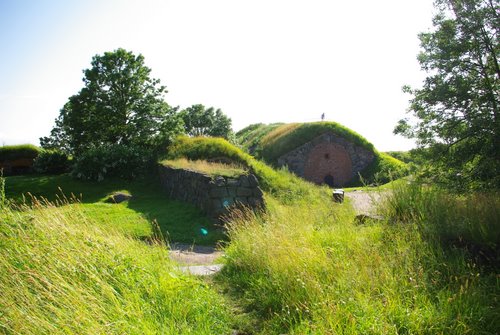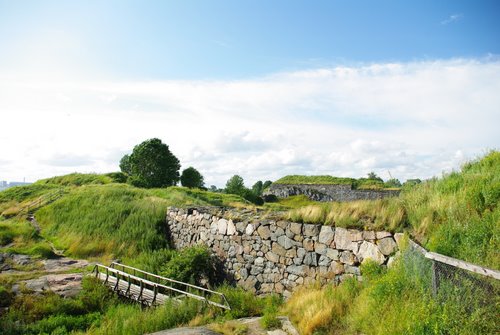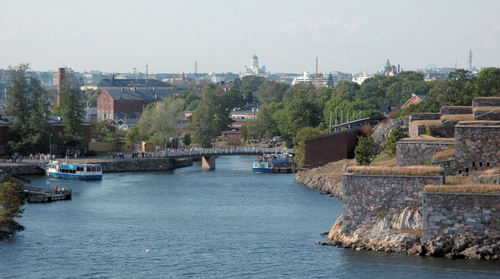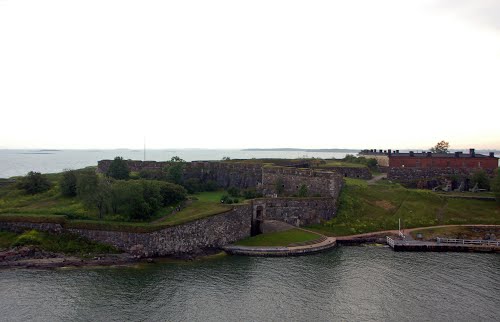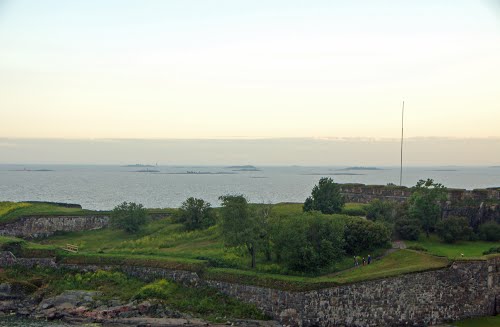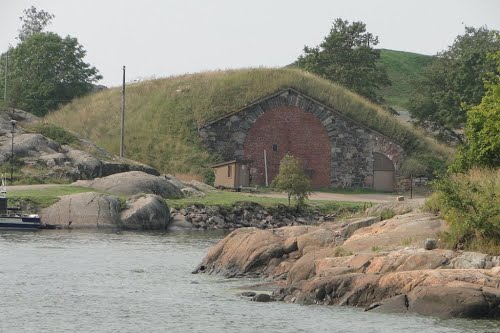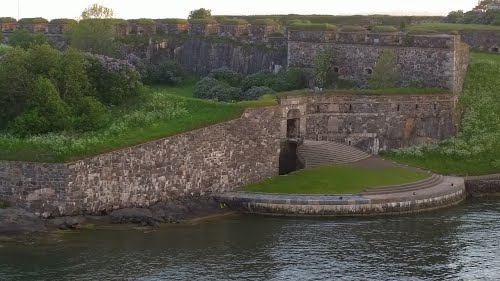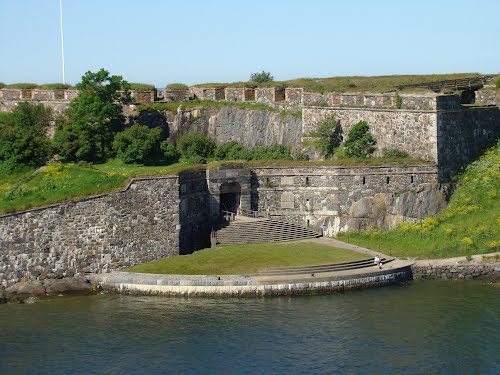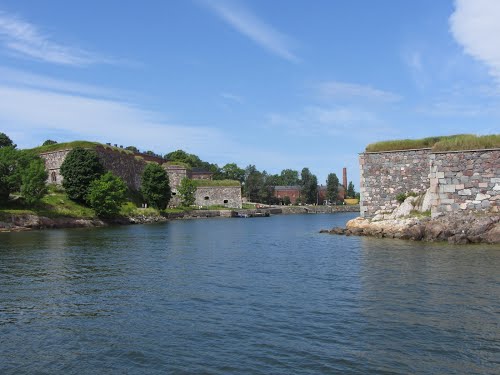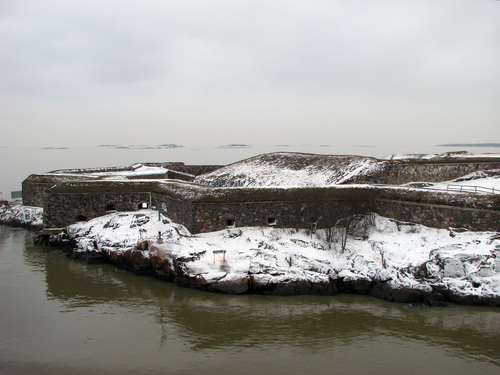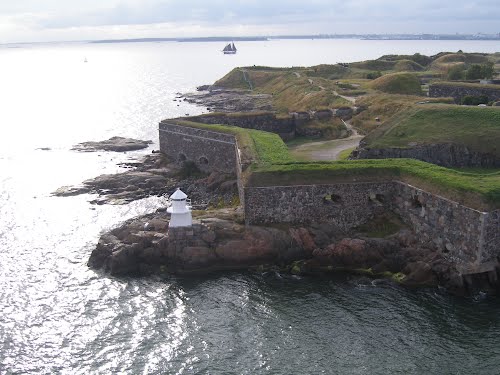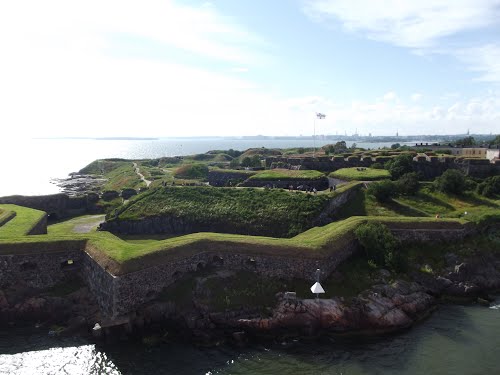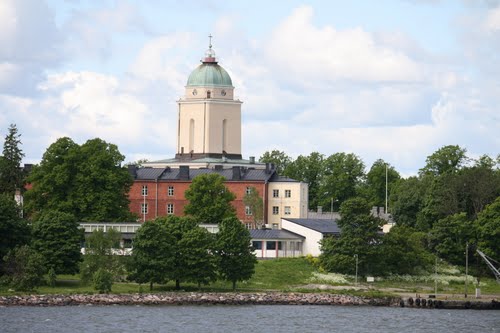Suomenlinna or Sveaborg, until 1918 Viapori, is an inhabited sea fortress built on six islands and which now forms part of the city of Helsinki, the capital of Finland.
Suomenlinna is a UNESCO World Heritage site and popular with tourists and locals, who enjoy it as a picturesque picnic site. Originally named Sveaborg, or Viapori as called by Finnish-speaking Finns, it was renamed in Finnish to Suomenlinna in 1918 for patriotic and nationalistic reasons, though it is still known by its original name in Sweden and by Swedish-speaking Finns.
The Swedish crown commenced the construction of the fortress in 1748 as protection against Russian expansionism. The general responsibility for the fortification work was given to Augustin Ehrensvard. The original plan of the bastion fortress was strongly influenced by the ideas of Vauban, the foremost military engineer of the time, and the principles of star fort style of fortification, albeit adapted to a group of rocky islands.
In addition to the island fortress itself, seafacing fortifications on the mainland would ensure that an enemy would not acquire a beach-head from which to stage attacks. The plan was also to stock munitions for the whole Finnish contingent of the Swedish Army and Royal Swedish Navy there. In the Finnish War the fortress surrendered to Russia on May 3, 1808, paving the way for the occupation of Finland by Russian forces in 1809.
The Swedish era
Construction
Sweden started building the fortress in 1748, when Finland was still a part of the Swedish kingdom. Augustin Ehrensvard (1710–1772) and his gigantic fortification work on the islands off the town of Helsinki brought the district a new and unexpected importance. The fortification of Helsinki and its islands began in January 1748, when Ehrensvard, as a young lieutenant colonel, came to direct the operations. Fortifications were also built on the Russian side of the new border during the 18th century and some of the Swedish ones were added to.
There were two main aspects to Ehrensvard's design for the fortress: a series of independent fortifications on each of the linked islands and, at the very heart of the complex, a navy dockyard. Initially the soldiers were housed in the vaults of the fortifications, while the officers had specially built quarters integrated into the baroque cityscape composition of the overall plan. The most ambitious plan was left only half complete: a baroque square on Iso Mustasaari partly based on the model of Place Vendome in Paris. As the construction work progressed, more residential buildings were built, many following the shape of the fortification lines. Ehrensvard and some of the other officers were keen artists and painted oil paintings presenting a view of life in the fortress during its construction, and giving the impression of a lively "fortress town" community.
Ehrensvard's plan contained two fortifications: a sea fortress at Svartholm and place d'armes at Helsingfors. Sveaborg was to be just the sea fortress with additional landside fortifications making up for the rest. Additional plans were made for fortifying the Hanko Peninsula, but these were postponed. Construction started in the spring of 1748 kept expanding and by September had around 2,500 men building them. Due to the repeated Russian threats in 1749 and 1750 more effort was placed on the fortifications on the islands at the expense of the land fortifications to secure a safe base of operations for the Swedish naval units along the Finnish coast. Fortifications spread along the islands Langoren, Vastersvarto, Lilla Ostersvarto, Stora Ostersvarto, Vargo, and Vargskar, the last of which became known during construction as Gustavssvard.
Using the military garrisoned in Finland as the workforce, construction continued with over 6,000 workers in 1750. Fortifications at Gustavssvard were completed in 1751 and the main fortifications on Vargo were ready in 1754 fully operational if unfinished. These accomplishments did not reduce the pace of construction and in 1755 there were 7,000 workers constructing the fortifications outside of Helsingfors which at the time had around 2,000 residents. Swedish participation to the Seven Years' War halted the construction efforts in 1757 which also marks the end of the rapid construction phase of the Sveaborg.
After the 'Cap' party rise to power in 1766 Ehrensvard was relieved of his post and replaced with ardent 'Cap' supporter Christopher Falkengreen. However, in 1769 when the 'Hat' party again gained power, Ehrensvard was again placed in command of the Swedish archipelago fleet in Finland, officially arméens flotta. By the time Ehrensvard died in 1772 no progress had been done at the fortifications. Efforts to improve fortifications continued under Jacob Magnus Sprengtporten, but his tenure was cut short with disagreements with the King Gustav III. Once again efforts slowed down as garrisons were reduced and in 1776 Sveaborg's commander reported that he couldn't even men tenth of the artillery placed to the fort. Even in 1788 at the start of the Russo-Swedish War of 1788–1790 Sveaborg remained in partially incomplete state.
Facilities for constructing ships for the Swedish archipelago fleet were constructed to Sveaborg in the 1760s. In 1764 the first three archipelago frigates launched from Viapori. In addition to the construction of the fortifications and ships, naval officer training was started by Ehrensvard by his own expense at Sveaborg in 1770. It took until 1779 before a naval military school was formally founded to Sveaborg.
Service
Sveaborg was formed and stocked according to the needs of the Swedish archipelago fleet and was unable to repair and refit the Swedish battlefleet after the battle of Hogland. Facilities were found lacking at Sveaborg especially in the areas intended for taking care of the sick and wounded. Russian control of the waters outside of Sveaborg practically blockaded the Swedish battlefleet to Sveaborg. By cutting the coastal sea route past Hango, Russians prevented supplies from being shipped from Sweden to the Sveaborg. The Swedish fleet finally managed to set sail for its base at Karlskrona on 20 November when sea had already frozen badly enough that some ships ice had to be sawed open before they could move. Fleet couldn't winter over at Sveaborg since it lacked supplies and facilities for fitting the ships.
While the route to Sweden was open again in late 1788 and in early 1789, Russian ships cut the connection from Sveaborg to Sweden by forming a blockade at Porkkala cape. Sveaborg was the most important location for archipelago fleet's ship construction and fitting in the war. Even then and despite the efforts, several ships remained unfinished until the end of the war at Sveaborg. Importance of the Sveaborg did not escape the Russians whose broad operational plan for 1790 included siege of Sveaborg both from sea and land.
Following a pact between Alexander I and Napoleon, Russia launched a campaign against Sweden and occupied Finland in 1808. The Russians easily took Helsinki in early 1808 and began bombarding the fortress. Its commander, Carl Olof Cronstedt, negotiated a cease-fire. When no Swedish reinforcements had arrived by May, Sveaborg, with almost 7,000 men, surrendered. The reasons for Cronstedt's actions remain somewhat unclear, but the hopeless situation, psychological warfare by the Russians, some bribed advisors, fear for the lives of a large civilian population, lack of gunpowder, combined with their physical isolation, are some likely causes for the surrender. By the Treaty of Fredrikshamn in 1809 Finland was ceded from Sweden and became an autonomous grand duchy within the Russian Empire. The Swedish period in Finnish history, which had lasted some seven centuries, came to an end.
Under Russian rule
After taking over the fortress, the Russians started an extensive building program, mostly extra barracks, and extending the dockyard and reinforcement to the fortification lines. The long period of peace following the transfer of power was shattered by the Crimean War of 1853–56. The allies decided to engage Russia on two fronts and sent an Anglo-French fleet to the Baltic Sea. For two summers the fleet shelled the towns and fortifications along the Finnish coast. The bombardment of Suomenlinna lasted 47 hours and the fortress was badly damaged. They were unable to knock out the Russian guns; after the bombardment the Anglo-French fleet sent no troops ashore and instead set sail for Kronstadt.
After the Crimean War extensive restoration work was begun at Suomenlinna. A new ring of earthworks with artillery emplacements was built at the western and southern edges of the islands.
The next stage in the arming of Suomenlinna and the Gulf of Finland came in the build-up to World War I. The fortress and its surrounding islands became part of "Peter the Great's naval fortification" designed to safeguard the capital, Saint Petersburg.
The fortress became part of an independent Finland in 1917, following the Russian Revolution. After the Finnish Civil War, a prison camp existed on the island.
Present
No longer very practical as a military base, Suomenlinna was turned over to civilian administration in 1973. An independent government department was formed to administer the unique complex. At the time there was some debate over its Finnish name, with some suggesting that the old name Viapori be restored, but the newer name was retained. The presence of the military on the islands has been drastically scaled down in recent decades. The Suomenlinna garrison houses the Naval Academy of the Finnish Navy. Suomenlinna still flies the war flag, or the swallow-tailed state flag of Finland.
Suomenlinna has always been much more than just a part of Helsinki - it is a town within the town. There are about 900 permanent inhabitants on the islands, and 350 people work there year-round.
For the general public, Suomenlinna is served by ferries all year, and a service tunnel supplying heating, water and electricity was built in 1982. From the beginning of the 1990s, the tunnel was modified so that it can also be used for emergency transport.

